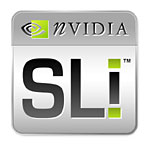Introduction

Ah, SLI. That most famous of three letter acronyms is rearing its 3D head again. I'm pretty sure the majority of the HEXUS-reading public has some idea of the basic ideas behind 3dfx's old concept. Plug in more than one graphics card to your system, get more performance. And while the technical details behind their implementation of 'SLI' don't apply to NVIDIA's resurrection, the basic precept still applies.
While we didn't cover the initial SLI press release for various reasons, it's my job to bring you an introduction to NVIDIA's SLI today, ahead of its official release in a few days.
I'll cover SLI and its operating modes, the continuity and device connectors, the driver, temperature testing, theoretical and real-world performance, coverage of both SLI-able platforms, coverage of all three possible SLI card configurations (well, the easy ones) and their single-card performance, price-performance, overclocking with SLI, and finally a look at a pair of soon-to-ship SLI workstations, over a series of articles across the next week or so.
This first article is an introduction into the basics, the operating modes, the physical setup of an nForce4 SLI system and performance of 6800 Ultra in SLI and single GPU modes. Hopefully that'll ease you in to things and let me setup the series of articles over the coming days. So if you've been waiting for SLI, grab a drink and put your thinking cap on as I hopefully explain it all as well as possible.
And while it's possible (in future iterations of SLI) to use more than just two graphics cards in the system, I assume that two cards are being used for the vast majority of the articles. If I talk SLI, I'm talking about two-GPU SLI, unless otherwise stated.
Scalable Link Interface
The SLI that NVIDIA is bringing to market shortly stands not for scan-line interleaving, the method 3dfx employed which has each card in the system render separate scan lines (the horizontal pixel lines on your monitor) with the scan lines combined before output to your monitor, to patch together a complete image.It does however stand for Scalable Link Interface, a technology set that allows you to increase performance by using multiple discrete GPUs in a system, one per graphics board currently, using a couple of different rendering methods.
Current implementations of NVIDIA's SLI take advantage of the PCI Express bus and protocol, that allows for more than one discrete graphics device on the same PCI Express host, even with identical device IDs. That capability allows an SLI setup to use the driver, PEG16X to PEG8X remap over two PEG16X electrical slots and a connector that joins both boards, to accelerate rendering.
Currently, SLI allows you to accelerate rendering using two effective modes, which map to around four general cases of multi-GPU rendering. The first, SFR or split-frame rendering, has each graphics card render a portion of the screen, split horizontally. One card, the primary device on the PEG host, is responsible for the top section of the screen, the secondary device therefore responsible for the bottom. That situation is then load balanced. More on that shortly.
The second mode is AFR, or alternate-frame rendering. For each graphics device in the system, the driver round-robins the graphics commands and data to each device, forcing each device to render a frame in turn. For a dual-GPU SLI setup, each device renders a frame, waits for a frame, then renders a frame, ad infinitum. Interleaved with the second device doing the same, that's AFR in a nutshell.
Let's cover the modes in more detail, starting with SFR.









